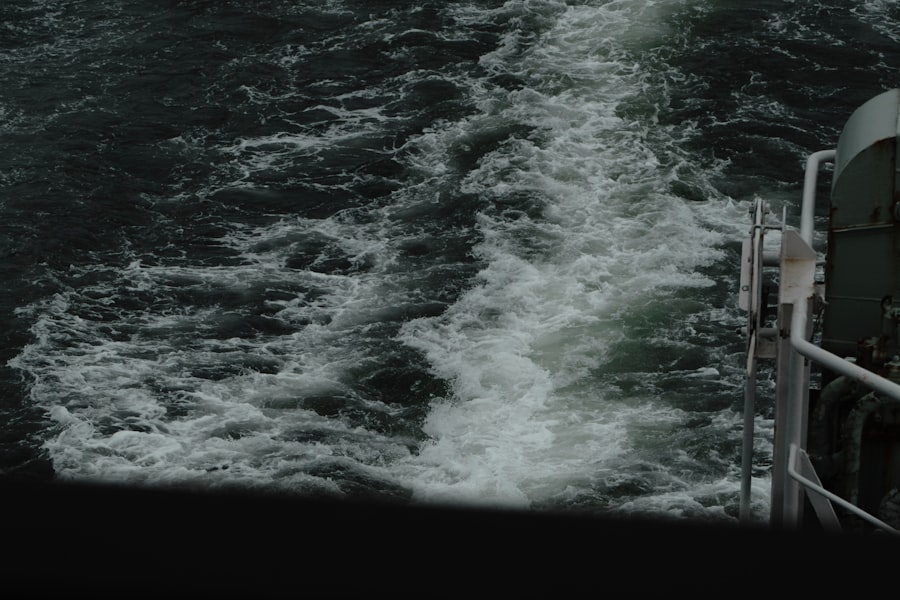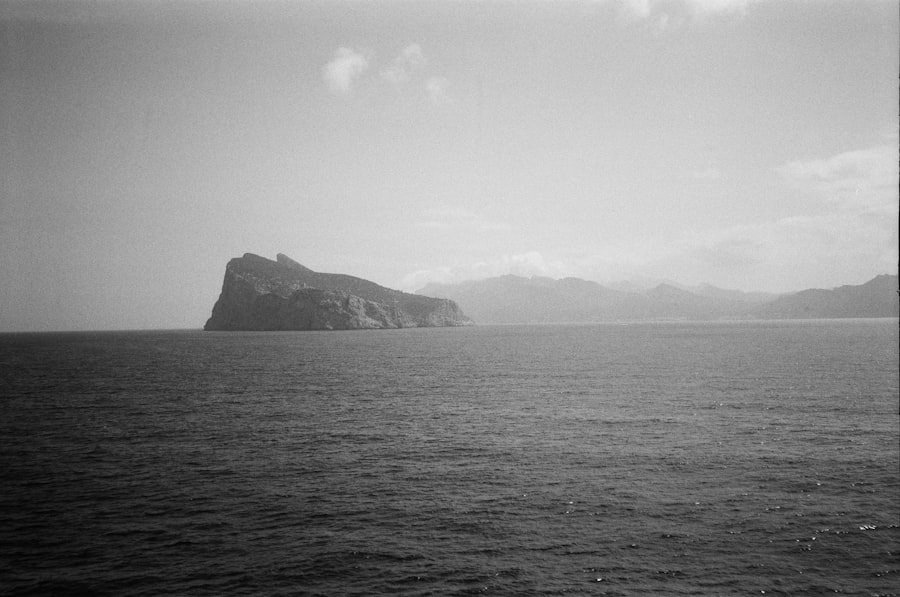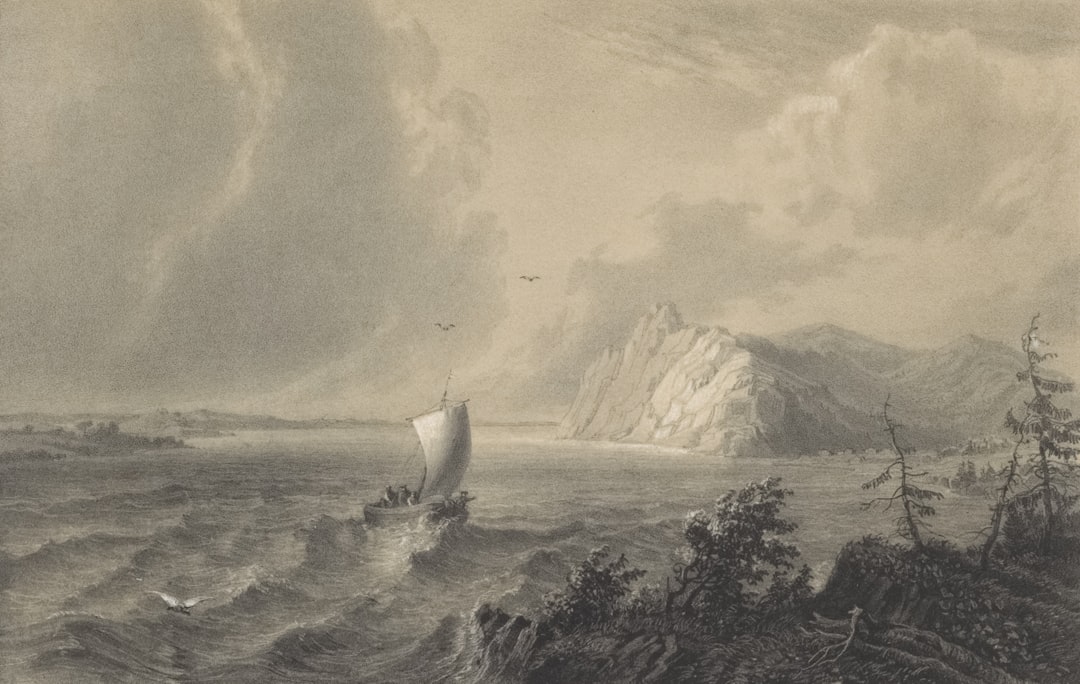Drake’s Passage, a body of water situated between the southern tip of South America and Antarctica, is renowned for its tumultuous seas and unpredictable weather. This narrow stretch of ocean, measuring approximately 800 kilometers (500 miles) wide, serves as a critical junction for maritime navigation, connecting the Atlantic and Pacific Oceans. The passage is named after the English explorer Sir Francis Drake, who was the first to navigate these treacherous waters in the late 16th century.
Its reputation as one of the most challenging maritime routes has not only captured the attention of sailors and explorers but has also inspired adventurers to attempt the extraordinary feat of swimming across it. The allure of Drake’s Passage lies not only in its historical significance but also in the sheer audacity of attempting to swim its frigid waters.
Despite these daunting conditions, the idea of conquering Drake’s Passage has become a symbol of human endurance and determination. As individuals set their sights on this ambitious goal, they are drawn by the promise of adventure and the opportunity to push their physical and mental limits.
Key Takeaways
- Drake’s Passage is a treacherous stretch of water between South America and Antarctica, known for its extreme weather and challenging conditions.
- Several attempts have been made to swim Drake’s Passage, with only a few successful completions due to the immense challenges it presents.
- Swimming Drake’s Passage requires extensive physical and mental preparation, including cold water acclimatization and mental fortitude to endure the harsh conditions.
- The potential dangers of swimming Drake’s Passage include hypothermia, strong currents, and encounters with marine wildlife such as sharks and jellyfish.
- Weather and ocean conditions play a crucial role in attempting to swim Drake’s Passage, with unpredictable changes posing significant risks to swimmers.
History of attempts to swim Drake’s Passage
The history of attempts to swim across Drake’s Passage is marked by both ambition and tragedy. The first recorded attempt was made in 1987 by a British swimmer named David Walliams, who sought to cross the passage as part of a charity event. Although Walliams did not complete the swim due to adverse weather conditions, his endeavor sparked interest in the possibility of swimming this notorious stretch of water.
Over the years, several other swimmers have followed in his footsteps, each hoping to achieve what many deemed impossible. In 2006, a significant milestone was reached when a group of adventurers led by swimmer Lewis Pugh successfully completed a swim across a portion of Drake’s Passage. Pugh’s swim was not only a testament to human resilience but also aimed to raise awareness about climate change and its impact on polar regions.
His achievement inspired a new wave of swimmers to consider the passage as a viable challenge, leading to increased attempts in subsequent years. Each swimmer brought their unique motivations and stories, contributing to the rich tapestry of history surrounding this remarkable endeavor.
The challenges of swimming Drake’s Passage

Swimming across Drake’s Passage presents an array of challenges that extend beyond mere physical endurance. The frigid waters, which can hover around 2 degrees Celsius (36 degrees Fahrenheit), pose an immediate threat of hypothermia. Swimmers must contend with the risk of cold shock, which can incapacitate even the most experienced athletes within seconds.
The combination of icy temperatures and strong currents creates an environment where every stroke requires immense effort and focus. Moreover, the unpredictable weather patterns in Drake’s Passage add another layer of complexity to any swimming attempt. Sudden storms can arise without warning, bringing with them fierce winds and towering waves that can easily overwhelm even the most skilled swimmers.
Navigating these conditions requires not only physical strength but also strategic planning and adaptability. Swimmers must be prepared for anything, from calm seas to tumultuous swells, making each attempt a true test of resilience and determination.
The physical and mental preparation required for swimming Drake’s Passage
| Preparation Aspect | Description |
|---|---|
| Physical Training | Endurance swimming, strength training, and cold water acclimatization. |
| Mental Conditioning | Visualization techniques, stress management, and mental toughness training. |
| Equipment Preparation | Specialized cold-water gear, navigation tools, and emergency supplies. |
| Nutritional Plan | High-calorie diet, hydration strategy, and meal timing for optimal performance. |
| Medical Evaluation | Physical examination, cold water swimming risk assessment, and emergency response plan. |
Preparing to swim across Drake’s Passage demands rigorous physical training and mental fortitude. Swimmers typically engage in extensive conditioning programs that focus on building endurance, strength, and swimming technique. This preparation often includes long-distance swims in cold water environments to acclimatize their bodies to the frigid temperatures they will face during the actual swim.
Additionally, swimmers may incorporate cross-training activities such as running, cycling, and strength training to enhance their overall fitness levels. Mental preparation is equally crucial for those attempting to swim this challenging passage. The psychological demands of such an endeavor can be overwhelming, as swimmers must confront their fears and doubts while maintaining focus on their goals.
Visualization techniques, meditation, and mental resilience training are often employed to help swimmers cultivate a strong mindset. By preparing both physically and mentally, swimmers increase their chances of success while also equipping themselves to handle the inevitable challenges that arise during their journey.
The potential dangers of swimming Drake’s Passage
The dangers associated with swimming across Drake’s Passage are numerous and varied.
Swimmers must be vigilant about monitoring their body temperature and recognizing the early signs of hypothermia, such as shivering, confusion, and fatigue.
Failure to address these symptoms promptly can lead to severe consequences, including loss of consciousness or even death. In addition to hypothermia, swimmers face the risk of encountering marine life that could pose a threat during their journey. While attacks from large predators like sharks are rare in these waters, other creatures such as jellyfish can deliver painful stings that may hinder a swimmer’s progress.
Furthermore, the unpredictable nature of ocean currents can lead to disorientation or being swept off course, making navigation a critical aspect of any swimming attempt. These potential dangers underscore the need for thorough preparation and caution when embarking on such an ambitious endeavor.
The impact of weather and ocean conditions on attempting to swim Drake’s Passage

Weather and ocean conditions play a pivotal role in determining the feasibility of swimming across Drake’s Passage. The region is notorious for its rapidly changing weather patterns, which can shift from calm to stormy within minutes. Swimmers must remain acutely aware of these fluctuations and be prepared to adapt their plans accordingly.
A successful swim often hinges on selecting an optimal window when conditions are favorable, which requires careful monitoring of weather forecasts and oceanographic data. Ocean conditions also significantly influence a swimmer’s experience in Drake’s Passage. Strong currents can create challenging obstacles that require swimmers to exert additional energy just to maintain their course.
Swimmers must develop strategies for navigating these currents while conserving energy for the duration of their swim. Understanding tidal patterns and local marine phenomena is essential for maximizing efficiency and minimizing risks during the attempt.
Notable individuals who have attempted to swim Drake’s Passage
Throughout history, several notable individuals have attempted to swim across Drake’s Passage, each leaving their mark on this extraordinary challenge. One such figure is Lewis Pugh, who gained international recognition for his successful swim in 2006. Pugh’s journey was not only a personal triumph but also served as a platform for raising awareness about climate change and its impact on polar regions.
His efforts inspired countless others to consider taking on this formidable challenge. Another prominent swimmer is Sarah Thomas, who made headlines in 2019 when she became the first person to swim across the English Channel four times non-stop. While her achievements were not directly related to Drake’s Passage, her determination and resilience resonated with those who aspire to conquer this icy expanse.
Thomas’s story exemplifies the spirit of adventure that drives individuals to take on seemingly insurmountable challenges, inspiring future generations of swimmers to pursue their dreams.
The role of support teams and equipment in attempting to swim Drake’s Passage
The importance of support teams cannot be overstated when it comes to attempting a swim across Drake’s Passage. Swimmers typically rely on a dedicated crew that provides logistical support, safety measures, and encouragement throughout the journey. This team often includes experienced boat pilots who navigate the treacherous waters while keeping a close eye on the swimmer’s progress.
Additionally, medical personnel may be present to monitor the swimmer’s health and respond quickly in case of emergencies. Equally vital is the equipment used during these attempts. Swimmers often wear specialized wetsuits designed for cold-water environments, providing insulation while allowing for maximum mobility.
Other essential gear may include buoyancy aids, safety floats, and communication devices that enable swimmers to stay connected with their support teams throughout the swim. The right equipment can make a significant difference in ensuring safety and enhancing performance during such an arduous endeavor.
The environmental impact of attempting to swim Drake’s Passage
While swimming across Drake’s Passage is primarily viewed as an individual challenge or adventure, it also raises important questions about environmental impact. The increasing number of attempts has led some environmentalists to express concerns about potential disturbances to marine ecosystems in this fragile region. Swimmers must be mindful of their actions during their journeys, ensuring they do not leave behind waste or disrupt local wildlife.
Moreover, many swimmers use their attempts as platforms for raising awareness about environmental issues affecting polar regions. By highlighting the effects of climate change on ocean temperatures and marine life, these adventurers contribute to broader conversations about conservation efforts and sustainability. Their endeavors serve as reminders that even personal challenges can have far-reaching implications for our planet.
The future of swimming Drake’s Passage
As interest in extreme sports continues to grow, it is likely that more individuals will attempt to swim across Drake’s Passage in the coming years. Advances in training techniques, equipment technology, and safety measures may enhance swimmers’ chances of success while minimizing risks associated with such endeavors. Additionally, increased awareness about environmental issues may lead swimmers to adopt more sustainable practices during their attempts.
The future may also see collaborative efforts among swimmers, environmentalists, and researchers aimed at promoting conservation initiatives in polar regions. By combining adventure with advocacy, these individuals can inspire others to appreciate the beauty and fragility of our oceans while encouraging responsible stewardship of marine ecosystems.
the significance of attempting to swim Drake’s Passage
The significance of attempting to swim across Drake’s Passage extends far beyond personal achievement; it embodies the spirit of exploration and human resilience in the face of adversity. Each swimmer who takes on this formidable challenge contributes to a legacy that celebrates courage, determination, and the pursuit of dreams against all odds. Their stories inspire others to push their limits while fostering greater awareness about environmental issues affecting our planet.
As more individuals embark on this extraordinary journey, they carry with them not only their aspirations but also a message about the importance of protecting our oceans and preserving our natural world for future generations. In this way, swimming across Drake’s Passage becomes more than just an athletic feat; it transforms into a powerful symbol of hope and advocacy for our planet’s future.
Drake’s Passage, known for its treacherous waters and challenging conditions, has long been a subject of fascination for adventurers and explorers. While many have attempted to navigate its perilous waves, the question of whether it has ever been swum remains intriguing. For those interested in the broader context of such daring feats and the geographical challenges they present, a related article can be found on MyGeoQuest. This article delves into the history and allure of Drake’s Passage, providing insights into the motivations and experiences of those who dare to confront its formidable nature. To explore more about this topic, you can visit the article on MyGeoQuest.
WATCH NOW! Drake Passage: Earth’s Deadliest Waters Revealed
FAQs
What is Drake’s Passage?
Drake’s Passage is a body of water located between South America’s Cape Horn and the South Shetland Islands of Antarctica. It is known for its rough and unpredictable seas, strong winds, and challenging sailing conditions.
Has Drake’s Passage ever been swam?
As of the time of writing, there is no record of anyone successfully swimming across Drake’s Passage. The extreme conditions and cold waters make it a highly challenging and dangerous feat.
What are the main challenges of swimming across Drake’s Passage?
The main challenges of swimming across Drake’s Passage include the frigid waters, strong currents, unpredictable weather, and the presence of icebergs. These factors make it extremely difficult for swimmers to attempt such a feat.
Are there any documented attempts to swim across Drake’s Passage?
There are no documented successful attempts to swim across Drake’s Passage. However, there have been reports of individuals considering or planning such a swim, but none have been completed.
